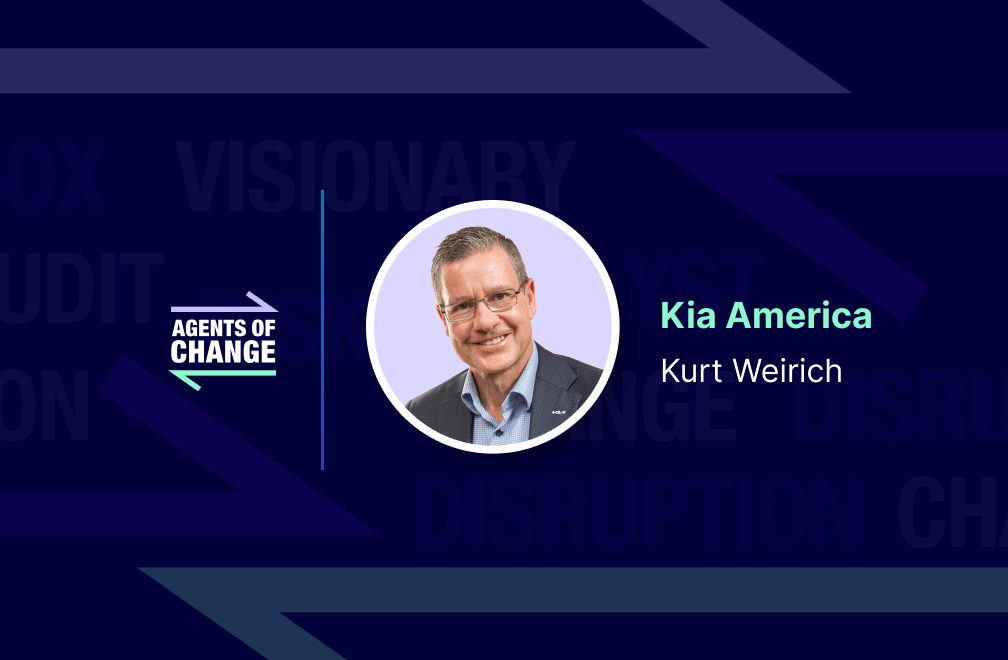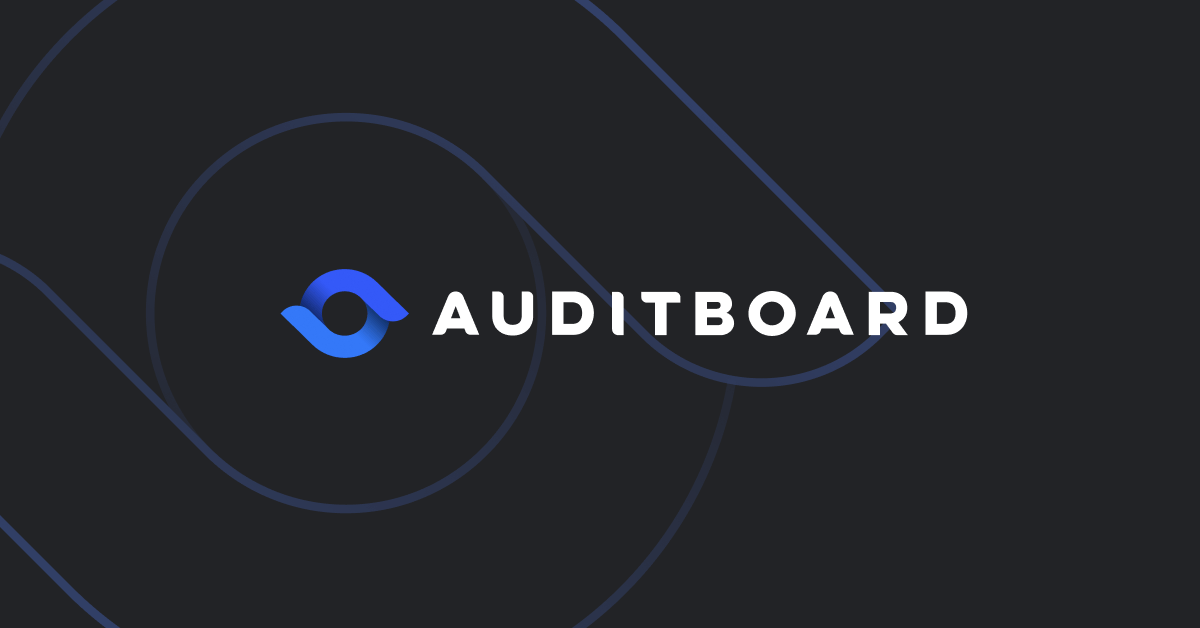Kurt Weirich of Kia America Uses Mindfulness to Lead Internal Audit

Join Richard Chambers for a new episode of his Agents of Change video series, featuring conversations with internal audit leaders from some of the world’s most prominent organizations about innovation in the profession.
In this episode, Richard sits down with Kurt Weirich, National Manager, Internal Audit of Kia America, to discuss how using mindfulness helps him cultivate calm, focus, and executive presence when faced with the ever-changing challenges of the CAE role, as well as:
- Leveraging key risk indicators for data-driven decision-making about the best use of limited resources in managing risk.
- Cultivating a teamwork-centered culture — where members know the team has their back — to attract and retain talent.
- Stepping outside internal audit’s traditional box to take a wider view of business risk and opportunity.
Watch the full conversation, and read the can’t-miss highlights below.
Bringing Enhancement Ideas to Internal Audit as a New CAE
Richard Chambers: Kurt, in my book, “Agents of Change,” I make the case that for internal audit to be successful in the future, they’re going to need to embrace changes and be catalysts for transformational change in the organizations they serve. How does that sound to you, in terms of a mission for internal audit?
Kurt Weirich: I believe it is the correct mission for our team here at Kia America. I think we have the ability to change our current culture. I’m relatively recent to Kia, and I’m bringing in my enhancement ideas — but the key is to add value and support our business objectives. How we do that is to take a partnership approach with the business as well as Kia dealerships that we work with. It’s a multifaceted approach, but we absolutely have to add value from the internal audit department.
Using Key Risk Indicators for Data-Driven Decision-Making
Richard Chambers: These last two years have represented some massive disruption and a heightened complex risk landscape unlike anything that we’ve ever seen in the internal audit profession. How can organizations ensure that their internal audit functions are identifying, monitoring, and mitigating the kind of risks that can materialize seemingly overnight to undermine an organization’s success?
Kurt Weirich: At Kia we use a variety of risk indicators, and we’re including additional information from departments within Kia and also externally. We’re bringing that data into our key risk indicators that was not there in the past, and that’s being monitored on a regular basis. We’ve increased the frequency of some of our audits — for example, if we’ve been alerted by an external source or internal monitoring, we will take action to look at the highest risk areas first. We have limited resources, and we have to apply them appropriately based on the risk that’s been identified.
Cultivating a Teamwork-Centered Culture to Attract and Retain Talent
Richard Chambers: Since the pandemic came on a lot of things have changed, not the least of which is where we work and how we work. Considering the changing dynamics of the workplace during the pandemic, what should internal audit do when it comes to innovating the profession in terms of how work is done now — and in the future?
Kurt Weirich: That’s an excellent question, and certainly appropriate right now. We’re not quite post COVID, but as a team we were all working remotely. I actually joined Kia during the pandemic, and that has been a very, very challenging role to come into without the opportunity to meet my team directly.
Currently we’ve permitted work from home as one of our strategies. We also have a hybrid approach, where you can come into the office as well. During the pandemic, we actually did our audits fully remotely, which in the past were all always on site. Currently we’re adjusting back to an onsite audit approach, but again, it’s literally been a transformation of the department in terms of how we do business during a pandemic.
Richard Chambers: I think we actually spoke for the first time, right after you’d come on board, and you were still trying to figure out how you were going to be able to navigate into that role, having come at a time when everything was remote. You’ve obviously done a tremendous job of acclimating to the role and figuring out what strategies need to be implemented. When it comes to talent strategies, are there things other than the remote working that you’ve had to address as a CAE?
Kurt Weirich: I believe talent management is key. Everything boils down to people. We talk about audit in terms of skill sets and so forth — it really is your people, it’s the talent.
In terms of retention, in my one-on-ones now I ask my team members to come in, and we’re actually meeting in person. In the past, during the pandemic, it was a hundred percent remote. Now we’re moving back towards in-person, and I believe it’s an excellent way to develop rapport and communication with your team.
We are a team at Kia. We all have to work together. As we develop that teamwork, when you can count on your coworkers to perform and you know that they have your back, it’s much more likely you’re going to retain that talent.
Using Mindfulness to Cultivate Focus and Executive Presence
Richard Chambers: Kurt, you’ve said that you use mindfulness in all facets of your life. I wonder if you could share with our audience some examples of how you use it professionally. What are some of the benefits of purposeful mindfulness, and how that provides success?
Kurt Weirich: The key is focus in the present moment — whatever your task is at hand. We live in the age of distraction with cell phones, laptops, and all sorts of devices around you. How is it that you bring yourself to focus? One of the ways I’ve found, professionally, is breathwork. You can focus on your breath, literally bringing yourself to that present moment by counting your breaths — though not out loud. It’s something that you can do as a professional to retain that balance and focus on what your task is.
I think there’s a lot of benefits. I think that you generate additional creativity and innovation. I would also describe it as having an executive presence. If you have a hurricane, there’s always the eye of the hurricane that’s calm. You can find that place. Internal audit, as we all know, is a stressful positio. Sometimes it’s the perfect storm and you come into it. How you manage that situation, how you respond, is key. Using mindfulness allows you to handle it in a professional manner.
Richard Chambers: It sounds like it’s maybe a matter of bringing your your physical body into the moment, so that you’re better prepared to deal with the business purpose of the moment.
Kurt Weirich: That’s right. I think the other advantage related to mindfulness is intention. What is the intention of this audit meeting? What do I hope to accomplish? Having a goal and working towards it is the professional approach. If you go into a meeting and you don’t necessarily have an an intention or a goal, those are the ones that can go sideways, is how we describe it. When you have an intention and you’re focused, you’re representing yourself, you’re representing the company, and you’re representing the profession — as leader would do.
Leveraging Technology for Real-Time Visibility Across the Audit Team
Richard Chambers: We see a lot of change happening macroeconomically. We’ve gone from talking about how worrisome inflation is to starting to think about recession. One of the things that I’m already seeing on the horizon is that next year internal audit departments may not be getting the kind of resources added that they have in the past. Yet, the risks aren’t going away. I often talk about capacity multipliers — things that can be done internally with the resources you have to help you enhance capacity to deal with the challenges. One of the most powerful capacity multipliers is obviously technology. Are there things that you have done, or hope to do with technology, that will enhance the capacity of your department?
Kurt Weirich: Yes. That’s one of our key inflection points. I think we are pivoting on how we do business. We’re moving away from a manual process of spreadsheets, and share drives. We’re moving towards an automated system. We’ve chosen AuditBoard’s OpsAudit as our module to develop. We’re using this not only as a tool, but to think about all of our audit processes. We’ve been doing things in a certain manner for a long time. Let’s think about that as we build out the system, should we be continuing this? Is there a different way that we can do this? Is there a way that we can enhance it?
We’re a national organization, so we’re all over. Tachnology will allow me as a CAE to observe how a particular audit is going in a particular location. There’s a lot of benefit as well around real-time reporting, once we get the AuditBoard system implemented. Overall, technology is a key component of leveraging our team to be more effective.
Taking a Global View of Risk and Opportunity
Richard Chambers: I get asked a lot to give my view on what the future might look like for internal audit. If I ask you to take out your crystal ball, and look ahead in the next 10 years, what are some things that you at least hope to see in internal audit, in general, and maybe in your team in particular?
Kurt Weirich: There’s one that definitely impacts, I believe, every audit department, and that’s the speed of change — how rapidly things have changed within the past two years. How is that going to look like in 10 years? How we respond to that is important. The key is having a vision for the department. I think you have to recognize that first of all, change is going to happen. One of the ways you can deal with that is having technology, for example, like AuditBoard.
I also think “globality” or the global perspective is important. Kia is a company that’s based out of South Korea, and we have to work with every market in the world. To have that perspective, we are more connected than ever. That includes language, culture, etcetera. I see that only increasing the amount of connection around the world. You have to be able to adapt. I think in the past you sort of stayed in your box. We have to be different. We have to have a wider view of how things are going to be.
Check out more audit leader interviews with Richard Chambers on our Agents of Change video series channel.


